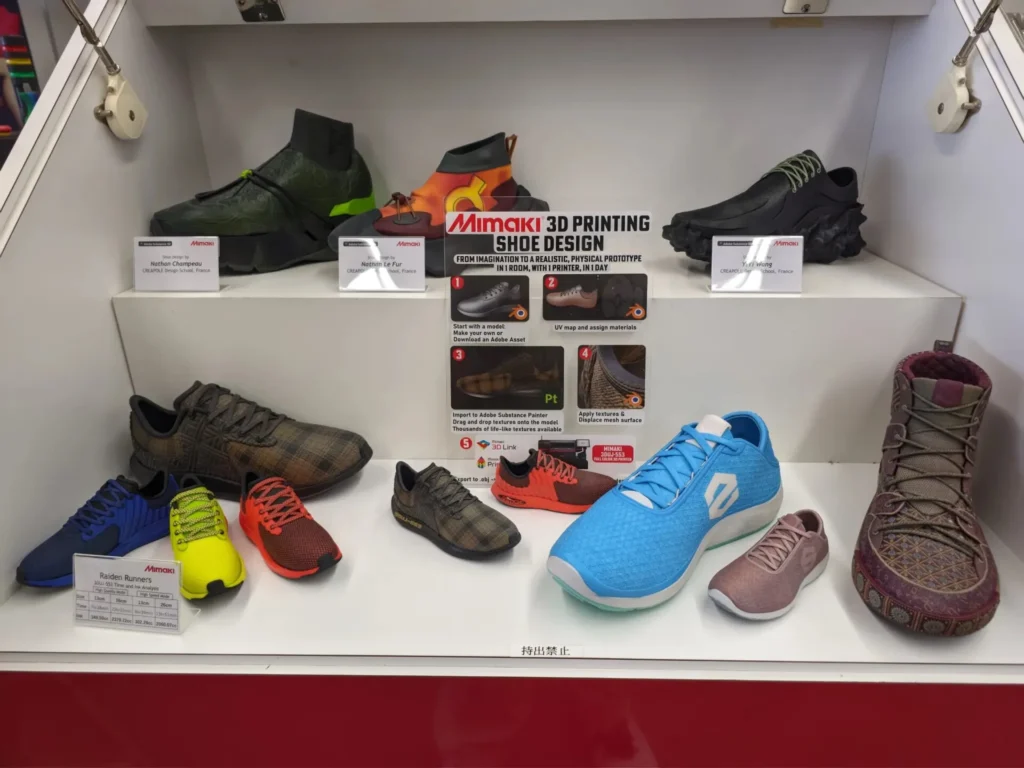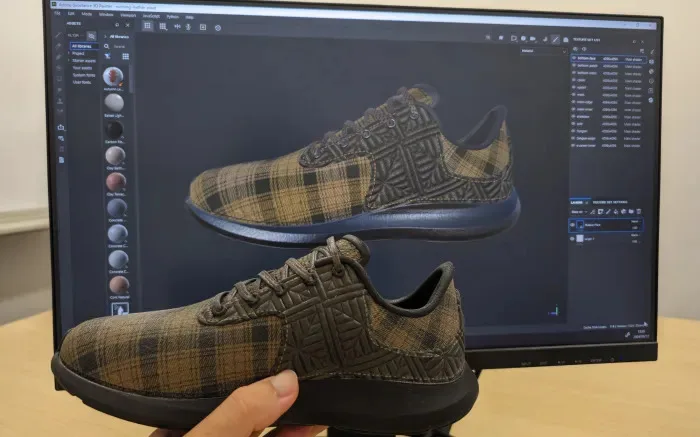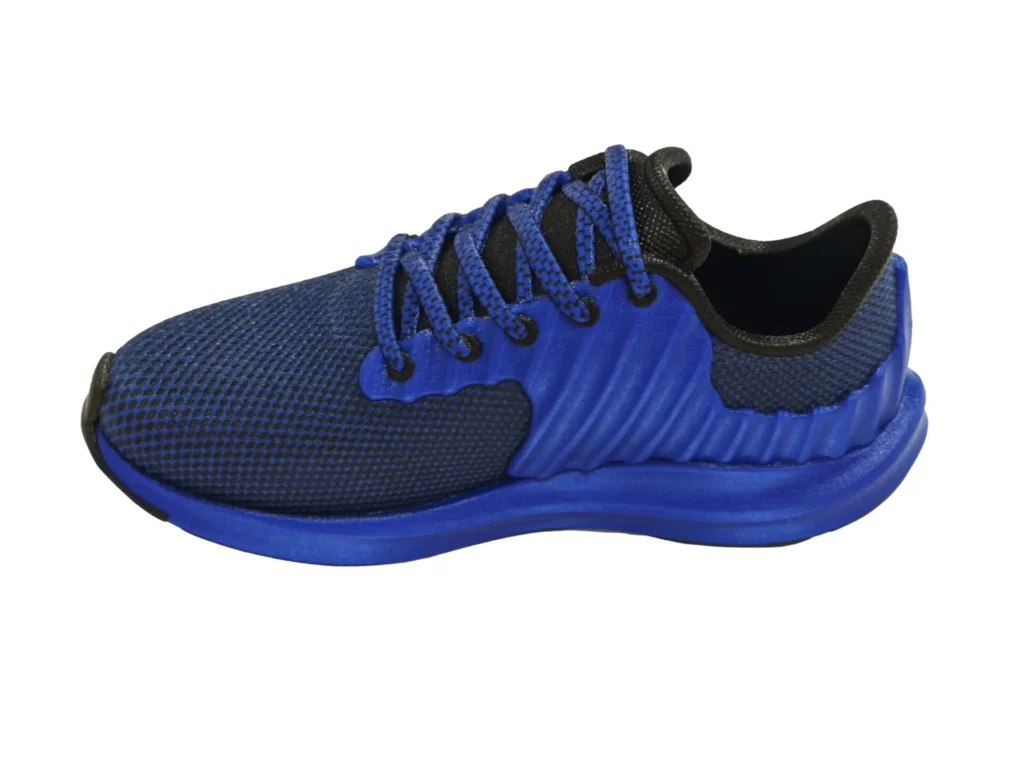The footwear industry has long been defined by innovation, with designers constantly searching for new ways to speed up the development process without sacrificing creativity or quality. One of the most significant advancements in recent years comes from the integration of 3D printing technology, and leading the charge in this space is Mimaki. Established in 1987, the Japanese company, known for its cutting-edge digital printing solutions, is revolutionizing the footwear design process through its full-color 3D printers, enabling faster, more efficient, and highly detailed prototype creation.
Mimaki’s impact on the footwear industry can’t be overstated. By allowing designers to visualize, test, and refine their ideas in record time, the company is streamlining a traditionally slow and costly process. Let’s dive deeper into how Mimaki’s full-color 3D printer is reshaping footwear design and pushing the boundaries of creativity in the industry.

The Importance of Prototypes in Footwear Design
Prototyping is a critical stage in footwear design. Before a concept can hit store shelves, designers need to see a tangible version of their ideas to test for aesthetics, fit, and functionality. Traditionally, this process could take months, especially when dealing with overseas manufacturers. Footwear prototypes often went through multiple rounds of revisions, each of which extended the timeline and increased costs.
That’s where Mimaki’s 3D printing technology comes in. With their full-color 3D printers, footwear brands can now produce prototypes in-house in under a day, drastically reducing both lead times and costs. This level of efficiency is a game-changer for designers and product development teams.
Mimaki’s Full-Color 3D Printing: A Game-Changer
At the heart of Mimaki’s innovation is the Mimaki 3DUJ-553, an industrial-grade full-color 3D inkjet printer capable of producing over 10 million colors. This printer doesn’t just produce monochrome models; it creates prototypes with the same colors, textures, and materials found in the final product. From intricate laces to the rugged outsoles, Mimaki’s prototypes are hyper-realistic and offer unparalleled detail.
For designers, this means the ability to hold a visually perfect representation of their design before committing to full-scale production. No more guessing how certain colors or materials will look on a finished product. With Mimaki, footwear prototypes look and feel just like the real thing.
Speeding Up the Design Process
Time is of the essence in the fashion and footwear industries. The typical design process for a new shoe can stretch on for months, as prototypes are ordered, shipped from factories, and revised multiple times. Mimaki’s full-color 3D printers eliminate much of this waiting.
Instead of sending design files to overseas factories and waiting weeks for a prototype to arrive, brands can now print a full-scale, highly detailed prototype in a matter of hours. According to Michael Sickels, 3D specialist at Mimaki, this rapid prototyping can save companies months during the development phase, allowing designers to quickly iterate, refine, and finalize their concepts.
Hyper-Realistic Prototypes at Your Fingertips
One of the standout features of the Mimaki 3DUJ-553 is its ability to replicate textures and materials with astonishing accuracy. Using Adobe Substance, a widely-used software in the design industry, footwear designers can access a library of realistic materials like denim, leather, and mesh. These textures can be seamlessly integrated into the 3D model, giving designers a prototype that mimics the look and feel of the final product.
Mimaki’s printer doesn’t just print models; it prints designs you can touch, assess, and tweak in real-time. This gives designers a tangible, lifelike prototype to present to stakeholders, test for functionality, and refine before committing to expensive manufacturing.

Seamless Integration with Industry-Standard Software
Mimaki understands the importance of compatibility in a fast-paced industry like footwear design. The Mimaki 3DUJ-553 is designed to work with industry-standard software such as Adobe Substance, Rhino, ZBrush, Modo, and Autodesk. This integration makes the transition to 3D printing simple and efficient for designers, allowing them to continue using their favorite tools without significant changes to their existing workflow.
By streamlining the process, Mimaki empowers designers to take full advantage of 3D printing technology without a steep learning curve. As Sickels explains, the printer supports all major 3D data formats, making it easy for designers to get started quickly and produce stunning prototypes with minimal hassle.
Bridging the Gap Between Design and Production
Historically, the journey from initial concept to final production has been lengthy, with numerous revisions and tweaks along the way. Thanks to Mimaki’s technology, that process is now significantly shorter. Designers can print, review, and revise their prototypes in a fraction of the time it once took, cutting months off the development cycle.
By integrating full-color 3D printers into their design studios, footwear brands gain the ability to experiment more freely. A designer who wants to test a bold new color or material combination no longer has to wait weeks to see the results. Instead, they can print a prototype within hours, make adjustments, and print again the next day. This ability to iterate quickly fosters creativity and innovation in ways that were previously unimaginable.

The Expanding Role of 3D Printing in Footwear Design
As 3D printing technology continues to evolve, its role in the footwear industry is expanding beyond just prototyping. Designers are beginning to explore how 3D printing can be used in manufacturing, with some brands already producing limited-run collections using this technology.
For now, though, the primary use case remains in prototyping. The ability to create full-scale, full-color prototypes with realistic textures is invaluable for brands looking to stay ahead of the competition. As 3D printing technology becomes more accessible and affordable, it’s likely that we’ll see even greater adoption across the footwear industry.
Beyond Footwear: Mimaki’s 3D Printing Applications
While Mimaki’s 3D printing technology is making waves in the footwear world, its applications extend far beyond that. The Mimaki 3DUJ-553 is being used in industries ranging from medical modeling to architecture. For example, medical professionals are using the printer to create highly detailed anatomical models, while architects are printing full-color building models for client presentations.
The flexibility and precision of Mimaki’s printers make them suitable for a wide range of applications, ensuring that the technology continues to drive innovation across multiple industries.
The Future of Footwear Design: Innovation and Speed
Looking ahead, it’s clear that 3D printing will play a central role in the future of footwear design. As Sickels notes, 3D modeling is becoming the go-to method for creating new shoe designs, and with good reason. The convenience, speed, and flexibility that 3D printing offers are unmatched by traditional methods.
In the coming years, we can expect to see even more footwear brands adopting 3D printing technology to accelerate their design processes and bring innovative products to market faster. Physical prototypes aren’t going away anytime soon, but the way they’re created is changing—and Mimaki is leading the charge.
Conclusion
Mimaki’s full-color 3D printer is transforming the way footwear designers work, offering unparalleled speed, precision, and creative freedom. By allowing designers to create hyper-realistic prototypes in-house and on-demand, Mimaki is helping brands shorten their product development cycles and push the boundaries of innovation.
With its seamless integration into existing workflows and compatibility with industry-standard software, the Mimaki 3DUJ-553 is the tool footwear designers have been waiting for. As 3D printing technology continues to evolve, its impact on the footwear industry—and beyond—will only grow stronger.
FAQs
1. How does Mimaki’s 3D printer speed up the footwear design process?
Mimaki’s 3D printer allows designers to print full-scale prototypes in under a day, significantly reducing the time spent waiting for factory-made samples.
2. Can Mimaki’s printer replicate realistic textures?
Yes, Mimaki’s printer uses software like Adobe Substance to replicate textures such as leather, denim, and mesh with stunning accuracy.
3. What software is compatible with Mimaki’s 3DUJ-553 printer?
The printer is compatible with industry-standard 3D modeling software like Adobe Substance, Rhino, ZBrush, Modo, and Autodesk.
4. Is 3D printing only used for prototyping in the footwear industry?
Currently, 3D printing is primarily used for prototyping, but some brands are exploring its use in manufacturing limited-run collections.
5. What other industries use Mimaki’s 3D printing technology?
Mimaki’s 3D printers are used in various industries, including medical modeling, architecture, and figurine production.



